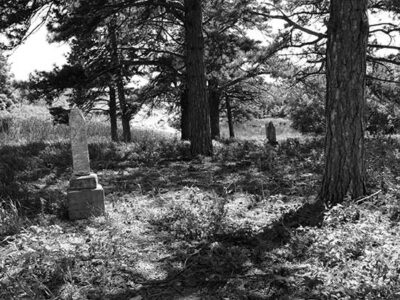Sandra Steingraber Karen Olson Kenny Ausubel Larry Dossey, M.D. |
A recent study funded by the National Institutes of Health found noteworthy cases of survival among cancer patients using what is known as the Hoxsey herbal treatment. Named after charismatic folk healer Harry Hoxsey, the therapy had been widely used in this country until it was outlawed 40 years ago. Like many other such “unorthodox” cancer treatments, the Hoxsey method was condemned without being medically assessed.
The new report could pave the way for what Harry Hoxsey always wanted: a fair scientific test. The report also signals a reversal in organized medicine’s 100-year civil war against other methods of healing. Alternative therapies are now riding a crest of scientific validation, popular demand, and commercial promise. There is no question that conventional cancer therapies are effective in certain cases, but the face of cancer treatment could change dramatically if alternative therapies are accepted by mainstream medicine.
According to family legend, Hoxsey’s great-grandfather, a Quaker farmer in southern Illinois, devised the remedies after watching a horse cure itself of cancer by grazing on plants that weren’t part of its normal diet. Based on this “horse sense,” he developed three formulas: an internal herbal tonic and two external salves. Hoxsey’s father was the first to try the remedies on people, reputedly with good results. Young Harry began assisting him from the age of 8, inheriting the formulas when his father died seven years later. On his deathbed, the elder Hoxsey made the boy promise he’d treat the poor for free, and treat all people without prejudice. He also prophetically warned against the “high priests of medicine” who would hound him mercilessly for taking money out of their pockets.
As late as 1900, American medicine embraced a variety of healing traditions. Doctors were poorly paid and held in low esteem until the rise of a medical-industrial complex fueled by surgery, radiation, drugs, and the new hospital system. The American Medical Association helped doctors consolidate their control over the health care system and targeted other practitioners as quacks.
Hoxsey’s fame spread quickly after the 1924 opening of his first Hoxsey Cancer Clinic in Taylorville, Illinois, but his father’s prophecy soon came true. After an alleged conflict with members of the AMA over the rights to his formulas, Hoxsey was dubbed the worst cancer quack of the century and eventually would be arrested more times than anyone in medical history.
Hoxsey fit the quack image perfectly. Brandishing his famed tonic bottle, this ex-coal miner with an eighth-grade education fulfilled the stereotype of the snake-oil salesman. Promoting a “secret remedy” reputedly discovered by a horse certainly didn’t win him any credibility.
An alliance of medical politicians and business interests systematically blocked Hoxsey from the scientific test that would have settled the dispute. After striking oil in Texas, Hoxsey poured money into expanding his network of clinics and financing endless court battles. By the mid-1950s, his Dallas-based operation was the world’s largest private cancer center, with 12,000 patients and clinics in 17 states.
Though two federal courts upheld the therapeutic value of Hoxsey’s treatment–and a tacit admission by both the AMA and the Food and Drug Administration that his external salves were effective–the FDA launched a massive “quackdown” on Hoxsey and others. The last Hoxsey Cancer Clinic was finally outlawed in 1960. Shattered, Hoxsey in 1963 dispatched his chief nurse, Mildred Nelson, to Tijuana, where she quietly treated another 30,000 patients until her death in 1999. (The Bio-Medical Center she established continues to operate.)
If the Hoxsey treatment remains “unproven,” it has never been disproven. In fact, as I detail in my book When Healing Becomes a Crime, all the Hoxsey herbs, formerly dismissed by organized medicine as “a bunch of weeds,” have now been shown to possess anti-cancer and anti-tumor properties. As for the supposedly “proven” treatments of surgery and radiation, those too were put into practice without the rigorous clinical trials that are considered the medical standard of proof. The Hoxsey treatment and other alternative approaches have often been banned on what amounts to a medical double standard.
With treatment and other costs total-ling more than $110 billion annually in the United States, cancer is big business. Much of the system is based on the pursuit of patents that give their holders, usually major drug companies, 20-year exclusive monopolies. As an herbal product that cannot be patented, the Hoxsey tonic is a threat to this system.
After 30 years and $33 billion, the American government’s “war on cancer” is a qualified failure. In fact, since the 1950s, evidence has steadily accumulated that surgery, radiation, and chemotherapy are far less effective than the public has been led to believe. Survival rates have remained essentially flat, while the incidence of many cancers continues to rise. Pressure from cancer patients and activists finally pushed Congress to create what has become the National Center for Complementary and Alternative Medicine, a branch within the NIH with an $89 million budget this year and a special priority to research unconventional cancer therapies. The Hoxsey report and several clinical trials of other promising cancer therapies is one result of this program. A recent survey at Houston’s M.D. Anderson Cancer Center, one of the largest in the world, found 83 percent of patients already using alternative approaches. This represents a great stride forward for cancer patients, who for a half-century have been caught in a crossfire, not just fighting for their lives but forbidden to use alternative treatments that are at least harmless and might help them.
Adapted from a longer essay in the Jewish cultural journal Tikkun (May/June 2001). Subscriptions: $29/yr. (6 issues) from Box 460926, Escondido, CA 92046.




